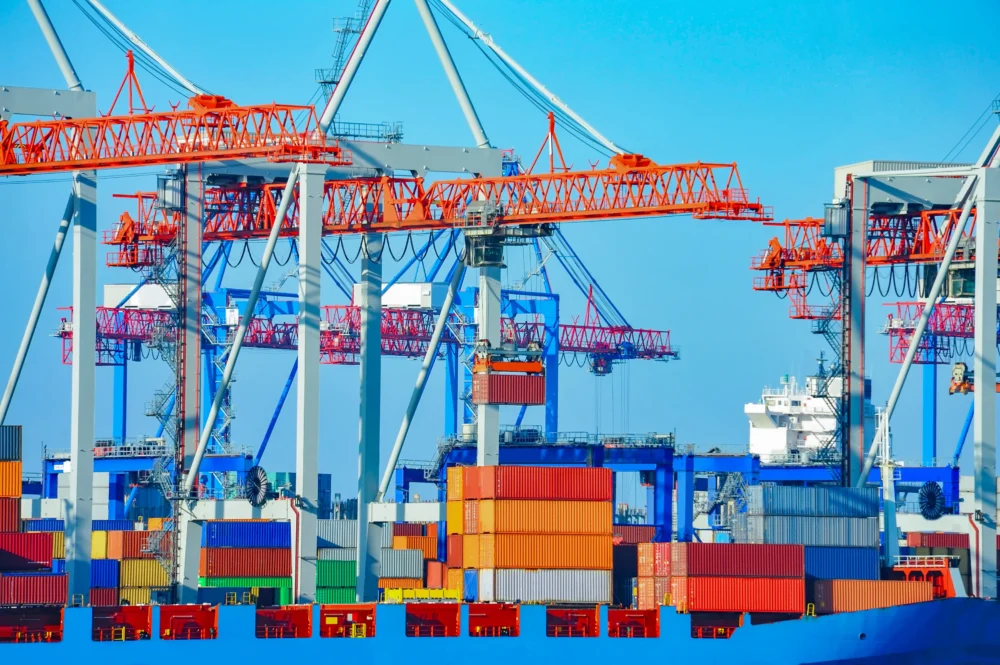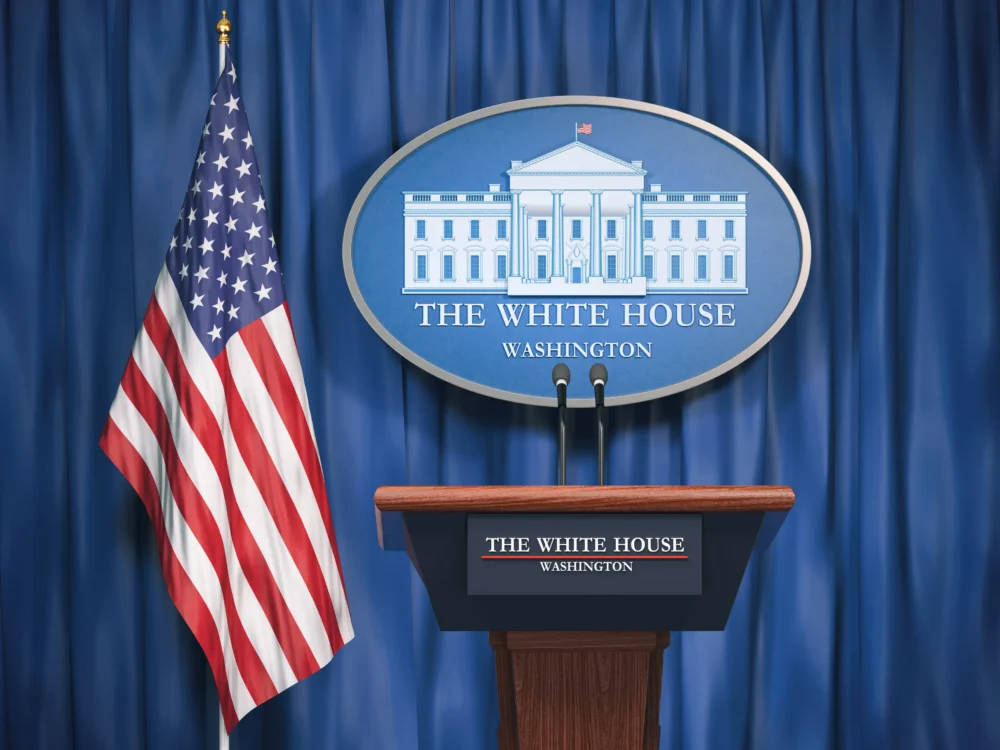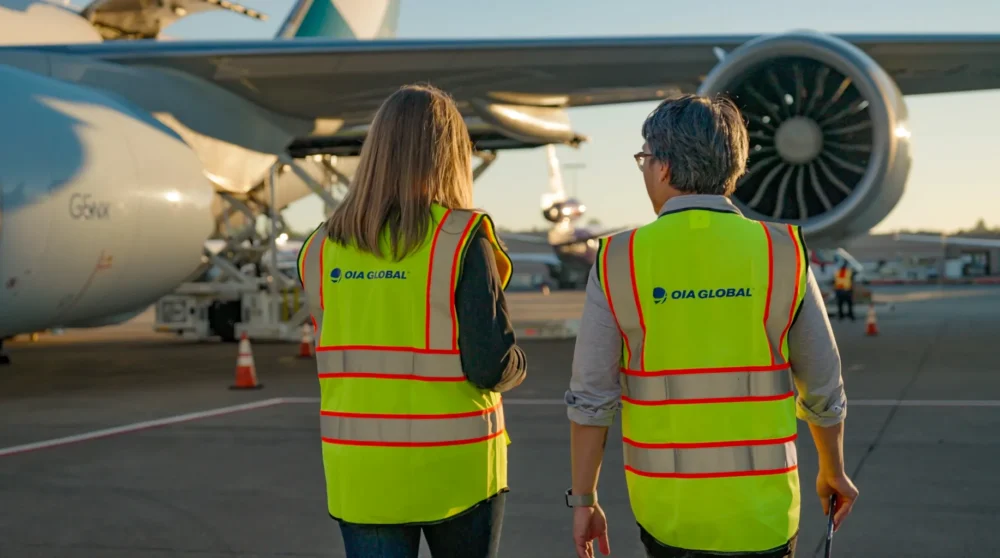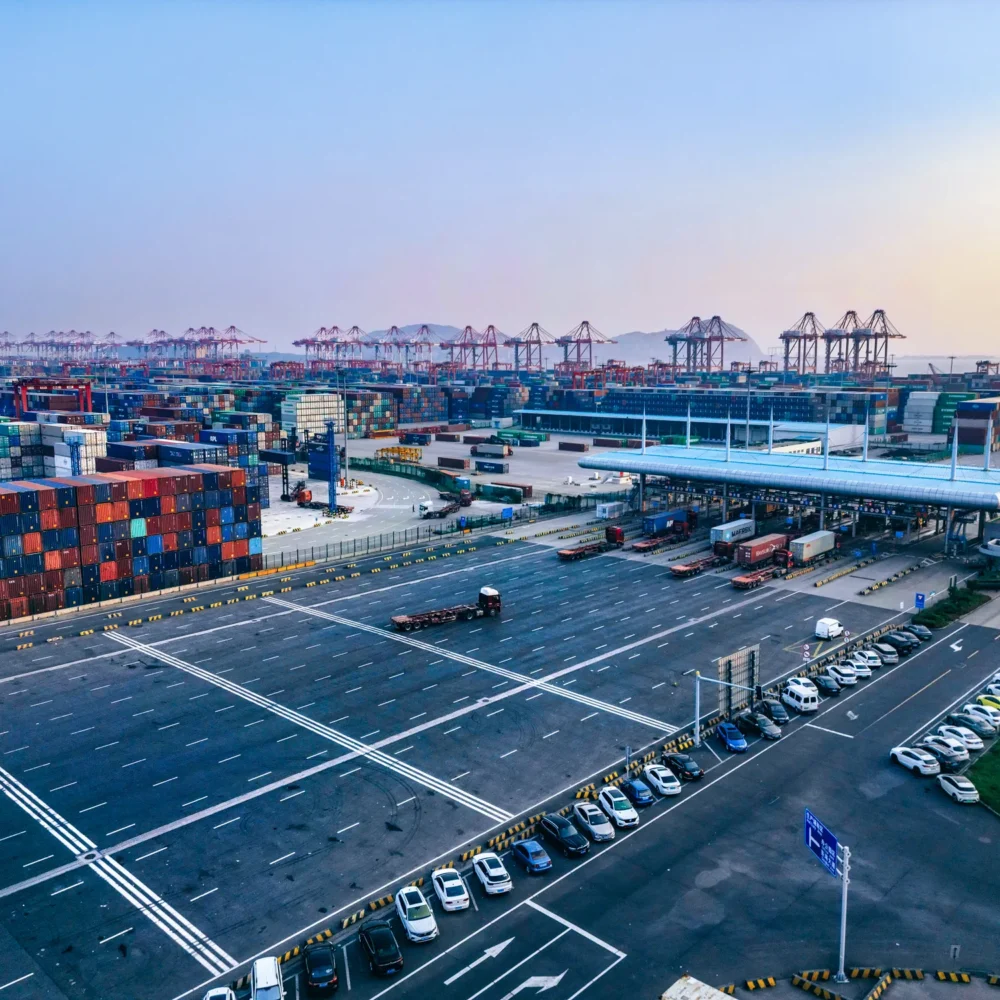Enter your shipment number.
2025 Tariff Updates
This is an evolving situation—tariff rates, country designations, and rules are subject to change.
16 April 2025
Illustration of global economic trends and trade analytics displayed on a digital world map with data charts and glowing blue lines.
Trade negotiations are evolving quickly! All parties in the supply chain industry should recognize that these widely impactful laws will change regularly and significantly. OIA Global publishes advisories, including updates about the latest tariff developments. We encourage you to bookmark some of these helpful resources for future reference.
Summary of Effective Dates
Nov. 1, 2025—U.S. imposes a 25% import tax on all medium- and heavy-duty trucks and a 10% levy on buses.
Oct. 14, 2025—10% tariffs on imports of softwood timber and lumber, as well as 25% levies on kitchen cabinets, vanities, and upholstered wood products.
Oct. 1, 2025—U.S. implements a 100% tariff on branded and patented pharmaceuticals entering the U.S.
Sept. 8, 2025—The U.S. set a baseline 15% ad valorem duty on nearly all imported products from Japan, which applies retroactively to goods entered for consumption or withdrawn from a warehouse for consumption on or after 12:01 a.m. EST on August 7th, 2025.
Sept. 5, 2025—President Trump modified the scope of the reciprocal tariffs, adding and removing some goods from the Annex II list.
Aug. 27, 2025—The de minimis exemption for low-value parcels is officially void. The rule allowed goods valued at $800 or less to enter the U.S. duty-free and with minimal customs oversight. Learn more here.
Aug. 27, 2025—U.S. imposes an additional 25% tariff on products imported from India.
Aug. 18, 2025—400+ new products are now subject to Section 232 steel and aluminum tariffs, impacting both raw materials and derivatives.
Aug. 11, 2025—USA and China agree to delay extra tariffs for 90 days, until November 10.
Aug. 7, 2025—U.S. imposes reciprocal tariffs on 50+ countries that did not reach a new trade deal before the Aug. 1 deadline.
Aug. 6, 2025—U.S. will apply a 50% tariff to most Brazilian goods.
Aug. 6, 2025—U.S. increases tariff on Indian products 25%; set to take effect Aug. 27.
July 30, 2025—U.S. suspends the duty-free de minimis classification for all countries.
July 30, 2025—All imports of semi-finished copper products and intensive copper derivative products will be subject to a 50% tariff, effective at 12:01 a.m. EST on Aug. 1.
July 27, 2025—The U.S. and European Union (EU) agree to a new trade deal.
July 22, 2025—U.S. reaches trade deals with Japan, Indonesia, and the Philippines.
May 12, 2025—China/USA agree to cut tariffs.
- 90 Day Suspension of Ad Valorem Duties on China.
- Suspension of Country-Specific Ad Valorem Rate of Duty.
- De Minimus tariff reduced from 120% to 54%
May 3, 2025—Auto parts (25% tariff under Section 232)
April 3, 2025—Autos (25% tariff under Section 232)
March 12, 2025—SEC 232 (Steel/Aluminum) tariff expansion
March 4, 2025—IEEPA raised to 20%
Feb. 4, 2025—IEEPA 10% tariff

De Minimus
July 30 Executive Order: The U.S. suspended the duty-free de minimis classification for all countries, which applied to parcels valued <$800. The order will take effect on August 29, 2025.
- Any goods shipped through the international postal network will be subject to tariff rates based on the value of the package and its country of origin.

Recent Executive Orders & Regulations
On October 30th, the U.S. agreed to delay the imposition of higher tariffs against China for another year. As part of a consensus agreement, The U.S. lowered tariffs on imports from China to 10%, down from 20%. A variety of Section 301 and Section 232 tariffs remain in place, and goods from China will still face a duty burden of roughly 47%, according to U.S. Trade Representative Jamieson Greer.
As of August 7th, 2025, the U.S. has enacted sweeping reciprocal tariffs on imports from 60+ countries, with duties ranging from 10% to over 100%, depending on origin and sector. Additions like sector-specific penalties and anti-transshipment provisions further complicate the trade landscape. The impact on landed costs, sourcing strategies, and compliance protocols will be significant.
- Mexico got a reprieve and its current rates were extended for another 90 days.
- The EU delayed its countermeasures by 6 months.
- In an Executive Order, the U.S. imposed an additional 25% tariff on Indian products, effective on August 27, 2025.
- The U.S. will apply a 50% tariff to most Brazilian goods, as part of the Executive Order: Addressing Threats to the United States by the Government of Brazil.
May 12, 2025 Executive Orders
90 Day Suspension of Ad Valorem Duties on China: The Executive Order will suspend for a period of 90 days application of the additional ad valorem duties imposed on China as listed in Annex I to Executive Order 14257 (as amended by Executive Order 14259 and Executive Order 14266, and clarified in the Presidential Memorandum of April 11, 2025 (Clarification of Exceptions Under Executive Order 14257 of April 2, 2025, as Amended).
Suspension of Country-Specific Ad Valorem Rate of Duty: Effective with respect to goods entered for consumption, or withdrawn from warehouse for consumption, on or after 12:01 a.m. ET on May 14, all articles imported into the customs territory of the U.S. from China, including Hong Kong and Macau, shall be, consistent with law, subject to an additional ad valorem rate of duty of 10% subject to all applicable exceptions set forth in Executive Order 14257 and the Presidential Memorandum of April 11, 2025.
International Emergency Economic Powers Act (IEEPA) Tariffs
- Imposed on February 4, 2025, at 10%, increased to 20% on March 4, 2025, with additional reciprocal tariffs up to 84% starting April 5, 9.
- 90-Day Pause for Reciprocal Tariffs effective April 10, 2025, reducing rates to 10% for all countries, except China which was increased to 125%
- Not eligible for duty drawback.
- Example total duty burden: COO:CN HTS = 7%, Sec 301 = 25%, IEEPA = 20%, Reciprocal = 125% → Total = 177%
In-Transit Provision: U.S. Customs and Border Protection (CBP) provided guidance on its IEEPA webpage concerning the applicability of the in-transit provision. The in-transit provisions for reciprocal tariffs only apply to the vessel mode of transportation and do not apply to other modes of transportation such as air, rail, truck, etc.
Section 232 Tariffs
- Trucks & Buses: The U.S. is imposing a 25% import tax on all medium- and heavy-duty trucks and a 10% levy on buses.
- Timber & Lumber: 10% tariffs on imports of softwood timber and lumber, as well as 25% levies on kitchen cabinets, vanities, and upholstered wood products.
- Copper: All imports of semi-finished copper products and intensive copper derivative products will be subject to a 50% tariff, effective at 12:01 a.m. EST on Aug. 1.
- Steel and aluminum: As of Aug. 18th, 400+ new products are now subject to Section 232 steel and aluminum tariffs, impacting both raw materials and derivatives.
- Automobiles & Parts:
- Cars: 25% from April 3, 2025
- Parts: 25% from May 3, 2025
- USMCA-eligible autos: Tariff applies only to non-U.S. content
- Misstatements: Subject to retroactive tariffs and clawback provisions
In the Federal Register, U.S. CBP provided instructions for importers, customs brokers, and filers about submitting import entries for the 25% tariffs on certain automobile parts from all countries.

Frequently Asked Questions (FAQ)
1. Do I need to act now?
Yes. Many of these tariffs are already in effect. If you import goods into the U.S., your costs and documentation requirements may have changed.
2. Can I change suppliers to avoid tariffs?
In many cases, yes. OIA can help you explore sourcing options in lower-tariff countries or regions.
3. Are there ways to recover or reduce tariffs?
Some mitigation strategies may be available, but certain tariffs—especially under IEEPA—do not allow duty refunds. Based on your products and trade lanes, we’ll help you determine what’s possible.
4. Will this affect my delivery times?
Possibly. While transportation timelines are stable, customs clearance may take longer due to more complex entry requirements and reviews.
5. Will these tariffs change again?
Yes. This is an ongoing situation. Rates and rules are subject to change with little notice.
6. Where can I get more information?
Visit https://www.oiaglobal.com/news/advisories for the latest updates. Or, contact your OIA Global representative to navigate the situation together.
How This Affects You
Cost Implications: Tariffs may significantly raise the total landed cost of your products, affecting margin and pricing models.
Supply Chain Shifts: You may need to reconsider where you source products or materials to avoid excessive tariffs.
Customs Complexity: Additional documentation, declarations, and compliance steps may be required for entry processing.
How OIA Can Help
Alternative Sourcing: Tap into our global network to explore supplier options in low- or no-tariff countries.
Compliance Support: OIA’s customs specialists can assist with classification reviews, eligibility for exclusions, and regulatory compliance.
Strategic Planning: We’ll work with you on proactive strategies to mitigate current and future tariffs’ financial and operational impact.
Consultations: We’ll help you evaluate the impact of tariffs across your supply chain and identify risk areas.





